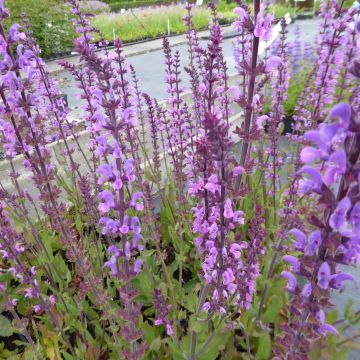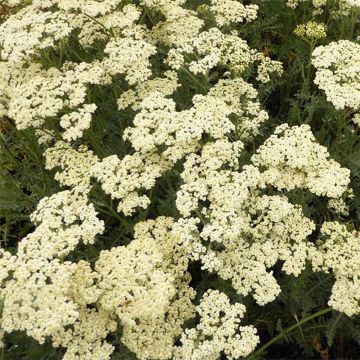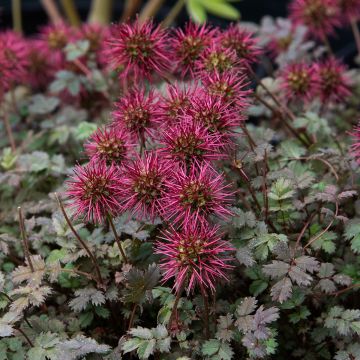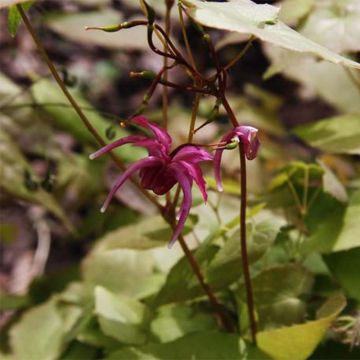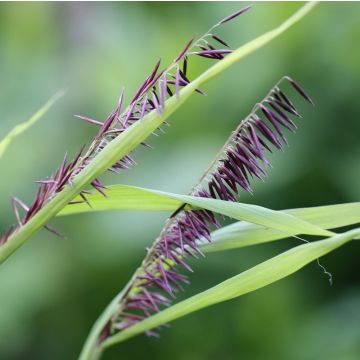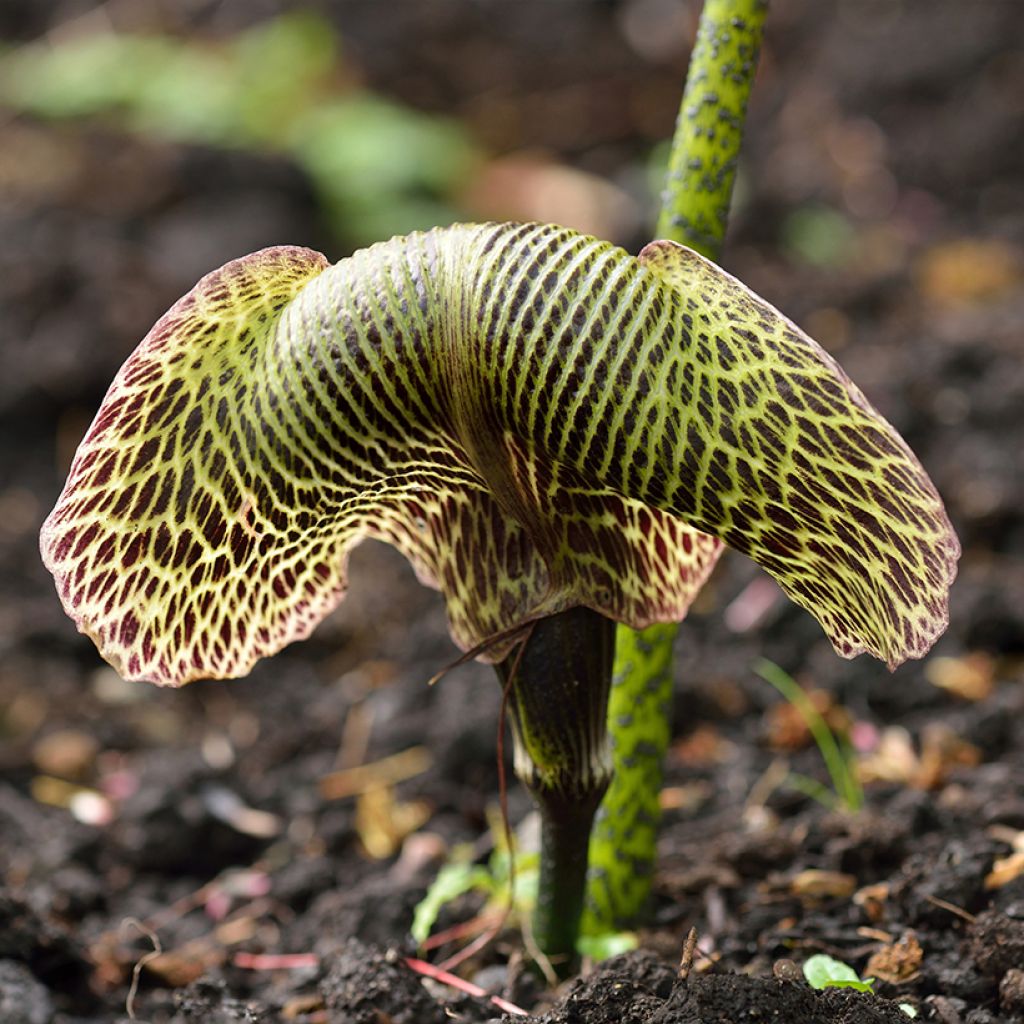

Arisaema griffithii


Arisaema griffithii
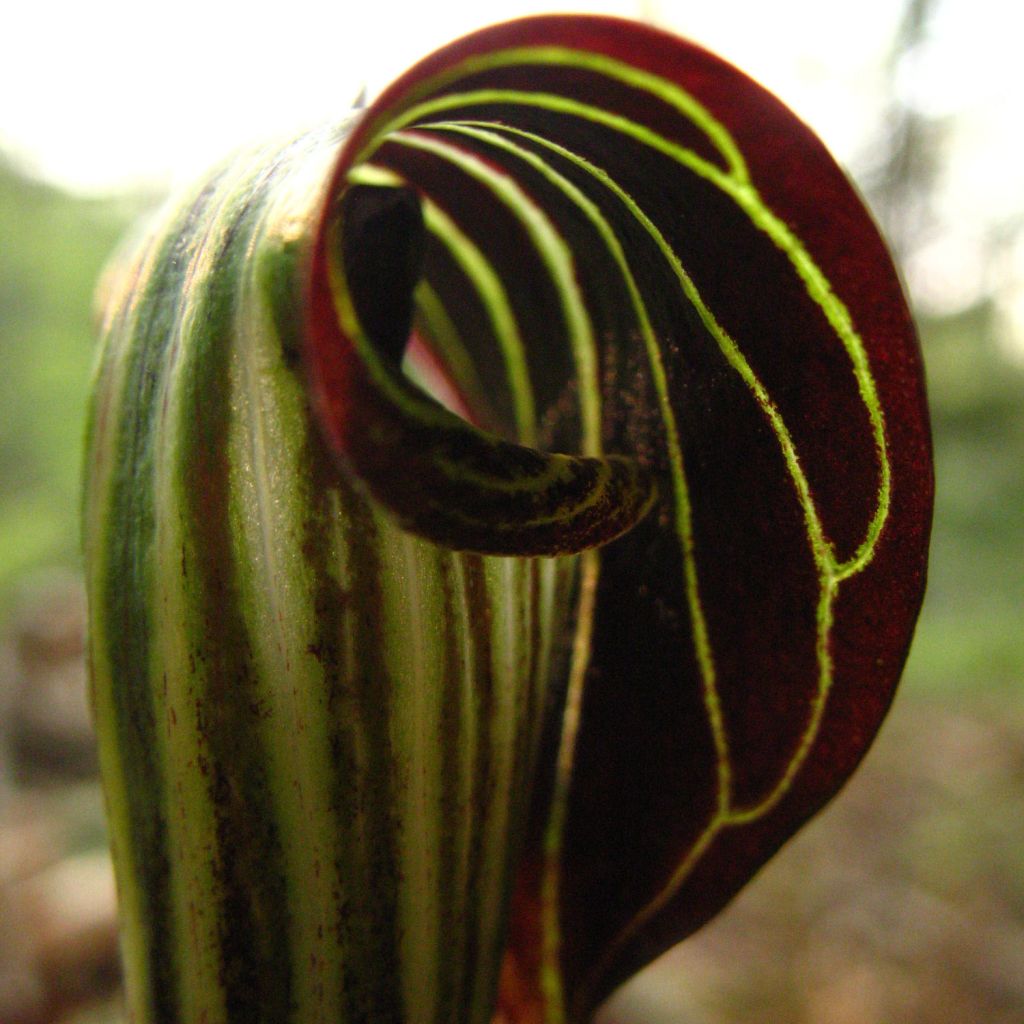

Arisaema griffithii
Arisaema griffithii
Arisaema griffithii
Cobra lily
Intact bulb upon arrival
Guy J., 17/03/2018
Special offer!
Receive a €20 voucher for any order over €90 (excluding delivery costs, credit notes, and plastic-free options)!
1- Add your favorite plants to your cart.
2- Once you have reached €90, confirm your order (you can even choose the delivery date!).
3- As soon as your order is shipped, you will receive an email containing your voucher code, valid for 3 months (90 days).
Your voucher is unique and can only be used once, for any order with a minimum value of €20, excluding delivery costs.
Can be combined with other current offers, non-divisible and non-refundable.
Home or relay delivery (depending on size and destination)
Schedule delivery date,
and select date in basket
This plant carries a 12 months recovery warranty
More information
We guarantee the quality of our plants for a full growing cycle, and will replace at our expense any plant that fails to recover under normal climatic and planting conditions.
Would this plant suit my garden?
Set up your Plantfit profile →
Description
Arisaema griffithii, known as the cobra plant or cobra lily, is a cousin of arums. It is an original bulbous plant, very resistant to cold, with exceptional flowering. It is the patterns that adorn the imposing spathe of the flower head that attract all the attention; their very reptilian appearance is remarkable in a mass of undergrowth or a slightly shaded pot.
Arisaema griffithii belongs to the family of araceae. It is native to the Indian mountains of the Himalayas. It is a species whose flower rises to 45 cm (18in) above the ground, sheltered by a leaf perched at 60 cm (24in) high. The floral stem emerges in early April, showing a flower head of a central spadix of tiny fleshy flowers surrounded by a widely flared funnel spathe. The neck of the funnel is larger than usual and has a curved end. It is decorated with a pattern resembling snake skin, making it attractive. This spathe has a thick texture in purple, black, green, and red colours when backlit, striped and cracked with light veins. The plant's interior is hard to see, and it has a nearly black spadix. The flower's stem has one leaf with a double umbrella shape that is bright green and wrinkled, with prominent veins. Each plant has only one gender, and if a male plant of any species is planted nearby, the female plant will create red fruit by the end of the season.
The flower heads resembling the head of a cobra gave this arisema its English name, Chinese Cobra lily. During the vegetative rest in summer, in the form of an elongated cylindrical tuber, Arisaema can be left in the ground.
Arisaema griffithii is a curiosity that can be planted in cool but well-drained soil, in light and humid undergrowth, or on the edge of undergrowth, where the sun is abundant but not scorching. It is a beautiful and architectural potted plant that pairs well with ferns, epimediums, Begonia grandis, rhododendrons, azaleas, or oriental lilies, but all parts of the plant are toxic.
Report an error about the product description
Arisaema griffithii in pictures
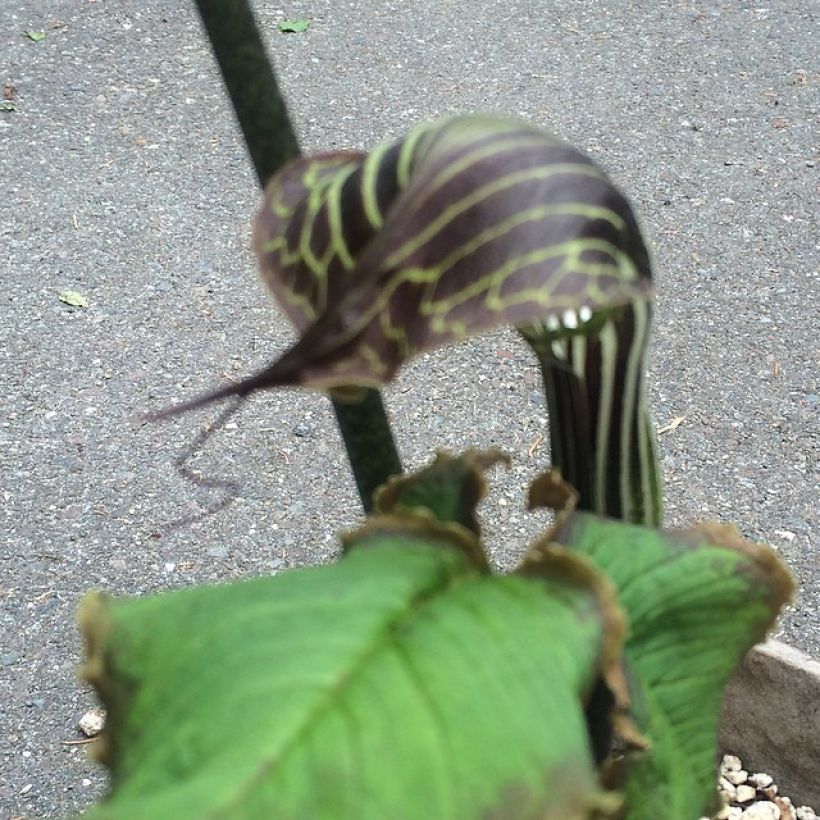

Flowering
Foliage
Plant habit
Botanical data
Arisaema
griffithii
Araceae
Cobra lily
Himalayas
Planting and care
Arisaema griffithii enters a period of winter dormancy, and can withstand negative temperatures if the soil is kept sufficiently dry. This plant thrives in a cool to humid climate, in partial shade, and in a soil that has adequate humus and moisture, with a neutral or slightly acidic pH level. While it requires moisture during spring and summer, it is vulnerable to excess water during winter. During the winter months, a thick layer of dead leaves as mulch on the base of the plant provides protection from the cold and also supplies humus.
Planting period
Intended location
Care
-
, onOrder confirmed
Reply from on Promesse de fleurs
Similar products
Haven't found what you were looking for?
Hardiness is the lowest winter temperature a plant can endure without suffering serious damage or even dying. However, hardiness is affected by location (a sheltered area, such as a patio), protection (winter cover) and soil type (hardiness is improved by well-drained soil).

Photo Sharing Terms & Conditions
In order to encourage gardeners to interact and share their experiences, Promesse de fleurs offers various media enabling content to be uploaded onto its Site - in particular via the ‘Photo sharing’ module.
The User agrees to refrain from:
- Posting any content that is illegal, prejudicial, insulting, racist, inciteful to hatred, revisionist, contrary to public decency, that infringes on privacy or on the privacy rights of third parties, in particular the publicity rights of persons and goods, intellectual property rights, or the right to privacy.
- Submitting content on behalf of a third party;
- Impersonate the identity of a third party and/or publish any personal information about a third party;
In general, the User undertakes to refrain from any unethical behaviour.
All Content (in particular text, comments, files, images, photos, videos, creative works, etc.), which may be subject to property or intellectual property rights, image or other private rights, shall remain the property of the User, subject to the limited rights granted by the terms of the licence granted by Promesse de fleurs as stated below. Users are at liberty to publish or not to publish such Content on the Site, notably via the ‘Photo Sharing’ facility, and accept that this Content shall be made public and freely accessible, notably on the Internet.
Users further acknowledge, undertake to have ,and guarantee that they hold all necessary rights and permissions to publish such material on the Site, in particular with regard to the legislation in force pertaining to any privacy, property, intellectual property, image, or contractual rights, or rights of any other nature. By publishing such Content on the Site, Users acknowledge accepting full liability as publishers of the Content within the meaning of the law, and grant Promesse de fleurs, free of charge, an inclusive, worldwide licence for the said Content for the entire duration of its publication, including all reproduction, representation, up/downloading, displaying, performing, transmission, and storage rights.
Users also grant permission for their name to be linked to the Content and accept that this link may not always be made available.
By engaging in posting material, Users consent to their Content becoming automatically accessible on the Internet, in particular on other sites and/or blogs and/or web pages of the Promesse de fleurs site, including in particular social pages and the Promesse de fleurs catalogue.
Users may secure the removal of entrusted content free of charge by issuing a simple request via our contact form.
The flowering period indicated on our website applies to countries and regions located in USDA zone 8 (France, the United Kingdom, Ireland, the Netherlands, etc.)
It will vary according to where you live:
- In zones 9 to 10 (Italy, Spain, Greece, etc.), flowering will occur about 2 to 4 weeks earlier.
- In zones 6 to 7 (Germany, Poland, Slovenia, and lower mountainous regions), flowering will be delayed by 2 to 3 weeks.
- In zone 5 (Central Europe, Scandinavia), blooming will be delayed by 3 to 5 weeks.
In temperate climates, pruning of spring-flowering shrubs (forsythia, spireas, etc.) should be done just after flowering.
Pruning of summer-flowering shrubs (Indian Lilac, Perovskia, etc.) can be done in winter or spring.
In cold regions as well as with frost-sensitive plants, avoid pruning too early when severe frosts may still occur.
The planting period indicated on our website applies to countries and regions located in USDA zone 8 (France, United Kingdom, Ireland, Netherlands).
It will vary according to where you live:
- In Mediterranean zones (Marseille, Madrid, Milan, etc.), autumn and winter are the best planting periods.
- In continental zones (Strasbourg, Munich, Vienna, etc.), delay planting by 2 to 3 weeks in spring and bring it forward by 2 to 4 weeks in autumn.
- In mountainous regions (the Alps, Pyrenees, Carpathians, etc.), it is best to plant in late spring (May-June) or late summer (August-September).
The harvesting period indicated on our website applies to countries and regions in USDA zone 8 (France, England, Ireland, the Netherlands).
In colder areas (Scandinavia, Poland, Austria...) fruit and vegetable harvests are likely to be delayed by 3-4 weeks.
In warmer areas (Italy, Spain, Greece, etc.), harvesting will probably take place earlier, depending on weather conditions.
The sowing periods indicated on our website apply to countries and regions within USDA Zone 8 (France, UK, Ireland, Netherlands).
In colder areas (Scandinavia, Poland, Austria...), delay any outdoor sowing by 3-4 weeks, or sow under glass.
In warmer climes (Italy, Spain, Greece, etc.), bring outdoor sowing forward by a few weeks.

































